Iron and Tea: Kikuchi Hojudo
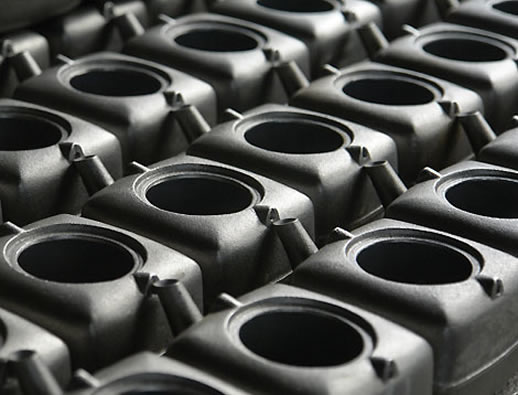
Yamagata is the home to some of Japan’s oldest iron foundries. This is also where some of the most innovative cast iron manufacturers are based today. Among these, the oldest of them all is Kikuchi Hojudo. We spoke to the president of the company about their history of innovation and tradition.
Interview by Takafumi Suzuki . Translation by Claire Tanaka
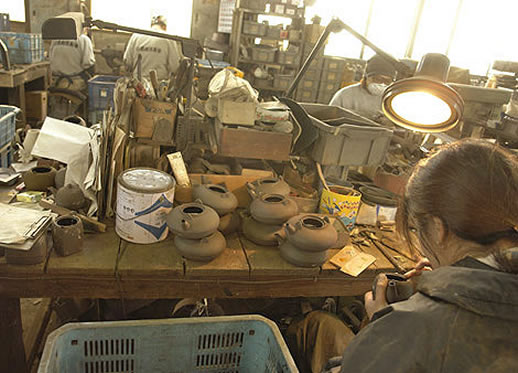
Q: I understand that Yamagata has a very old tradition of producing cast iron.
A: Yes, they say that people have been making cast iron goods in the Yamadera region for 960 years.
Q: Mr. Kikuchi, how many generations have there been at this workshop?
A: I’m the fifteenth generation. This foundry was established in 1604. According to public documents, we have been around for at least four hundred years. With a little more investigation you can find evidence that the foundry has been around since the Azuchi-Momoyama Period.
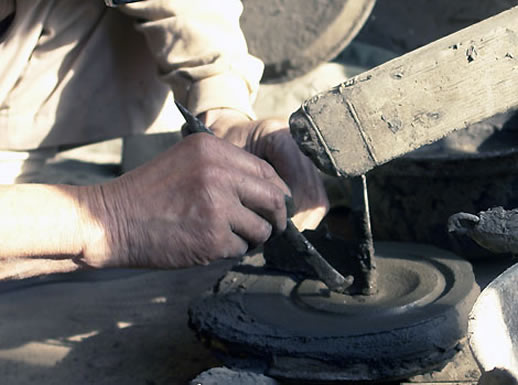
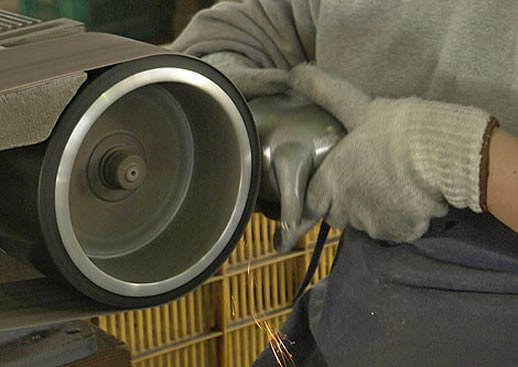
Q: That’s quite a lot of history to bear. How many years has it been since you took ownership from the previous generation?
A: My father died when he was 56, and that was oh, about 26 years ago now. I was 23 when I took over the company.
Q: You took it over at quite a young age. Weren’t you hesitant at all?
A: Not at all. My father never ordered me to take over the business. He has passed on now, but right before he died he actually made a point of saying to me, “If you don’t want to take it on, you don’t have to.”
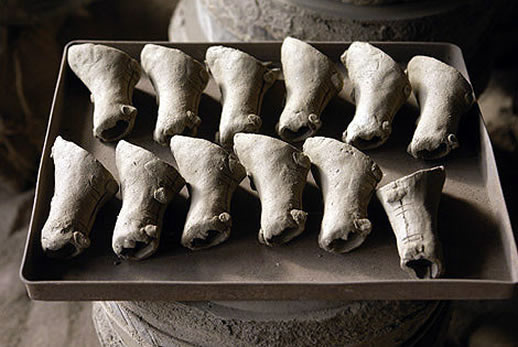
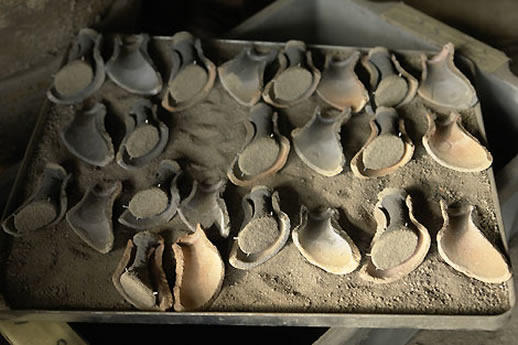
Q: Even though you were told you didn’t have to, you chose to take over the family business. You must have a deep connection to it somehow?
A: I have always loved the act of making things. I graduated from Musashino Art University, and I’d studied carving and sculpture, and I’d always watched my family at work, so it was an easy decision to make when I chose to take over the business.
Q: But that was an era when people didn’t have much interest in traditional Japanese products, wasn’t it?
A: That’s true. There was even a magazine, “Popeye” dedicated to American West Coast culture. Everyone was into the West Coast scene. (laughs) But I studied Western art in school and it actually had the effect of showing me how deep Eastern culture can be. Actually, when my father died, I had just been awarded a scholarship to study at a national university in Paris. I was willing to turn that down so I could take over the family business.
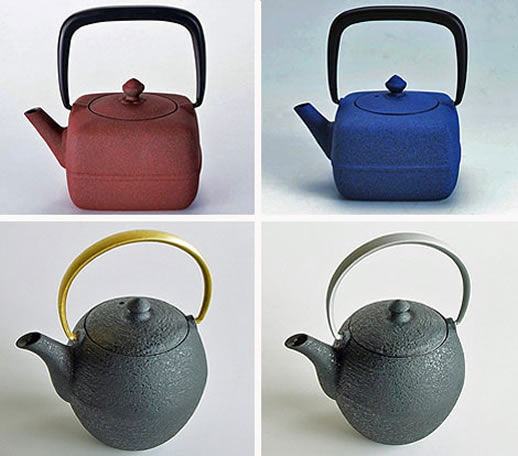
Q: Mr. Kikuchi, through your job of management and manufacturing, what in particular are you pouring your energy into?
A: First and foremost, I want to use our traditional techniques to preserve and protect what needs protecting. We make cast iron goods, teapots in particular, out of the same material that Japanese swords are made of. Technically they are very difficult to make, and I’m confident that there is no other country in the world that makes use of such techniques. There are seventy-six steps in the manufacturing process, and every one of them is necessary. One less or one more and it would all be ruined. Through long years of natural selection, only the most efficient techniques remain. That’s the kind of thing I want to protect, and somehow make it so the product fits in with modern lifestyles.
Q: You’re conscious of a sense of traditional manufacturing with a modern angle.
A: Ever since around 1997 or ’98 I’ve been gradually heading in that direction. A way of making things that incorporates a Japanese sense of aesthetics, philosophy, and subtlety. And a product that we called “Yoho” which came out of that experiment was a massive hit. We sold two thousand units in a month. Over three years we sold twenty thousand units. The fact that we sold so many told me that we had managed to hit on a common feeling with our customers. Even if the customers weren’t aware of it, I think that what they were resonating with was that old Japanese aesthetic that remained in our classic product.
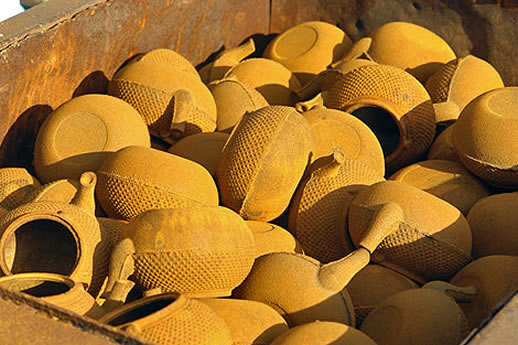
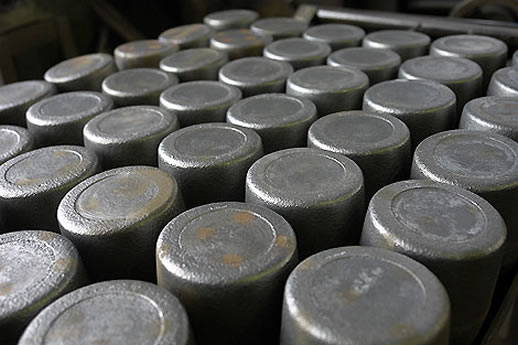
Q: What is it specifically about your cast iron ware that reflects that Japanese aesthetic?
A: It’s the subtlety. For example, the way the hot water pours out of the spout. People’s world view of life and death used to be reflected in their tools. For example, a soldier would drink a last cup before going to war. In a situation where he may die tomorrow, he looked for pureness in his tools. That’s why I think that the Japanese aesthetic lies in the subtlety.
Q: Do you do any design yourself?
A: Yes. The Yoho was actually my idea. But I don’t really have a sense of “now I’m designing this.” I’ve been helping out in the foundry since I was a child, spreading sand, pouring iron, making cases for transport. I had a grasp of every aspect of the work. Then I studied sculpture in university, so it was a very natural progression for me to do design.
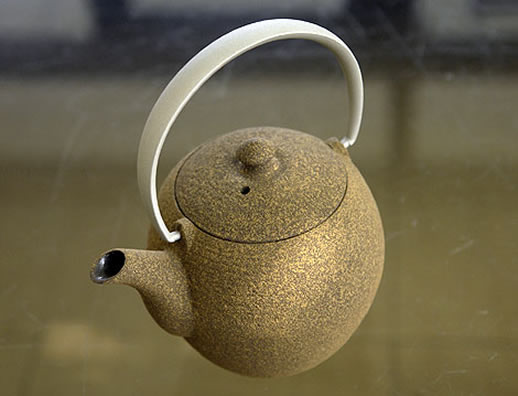
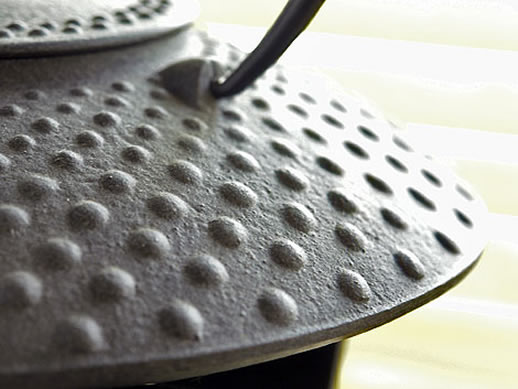
Q: It was surprising to hear that your foundry, with its traditional Japanese aesthetic, has co-produced a teapot designed by Ken Okuyama (JAPAN brand, Yamagata Kobo).
A: That man’s design ability is in a league of its own among Japanese people. He uses the Japanese style of straight lines, but they’re not straight. His skilled use of sensitive curves is what makes his designs so wonderful. Also, collaborating with him, one thing that was really good was how he really worked at the functional angle of how to make a pot that brews good tea.
Q: Could you give me an example of what you mean by the functional side of things?
A: Actually, an iron teapot is a simple vessel, so if you want to make a far-out design, you can take it as far as you like. But on the other hand, when you think about it as a tool with a specific function, it’s incredibly difficult. You need a comfortable handle, a line that doesn’t sag, and good heat retention. It’s hard to get all those bases covered at once. And then the ideal temperature for good tea, we researched that and found that there is a temperature where the sweetness and sharpness make a perfect balance. That temperature is seventy-three degrees Celsius.
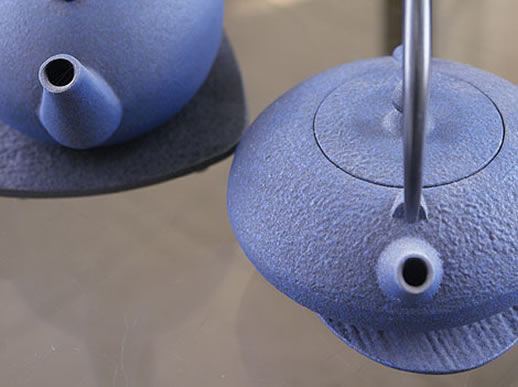
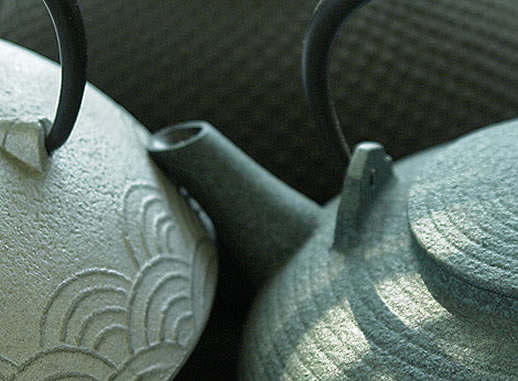
Q: I see. But isn’t it difficult to incorporate a way of maintaining a particular temperature?
A: Yes, it’s very difficult. In order to find a way to maintain seventy-three degrees, we had to start by reevaluating our materials. And we found the secret, the know-how, hidden in four-hundred year-old casting techniques. The method of blending materials when they are melted, the way of extracting impurities, those techniques can’t be replicated by modern scientific methods even today.
Q: The handle of the Mayu pot is very beautiful too.
A: Yes, isn’t it? But until recently if we wanted to make such a line with our usual methods, one pot would have cost 30 to 50,000 yen. That’s an unacceptable price for something people would want to use on a daily basis. But Yamagata prefecture has a lot of metal processing companies. We went and spoke to one industrial product manufacturer and they said, why not try this technique, and it worked like a charm. It’s a trade secret, so that’s just about all I can tell you. (laughs)
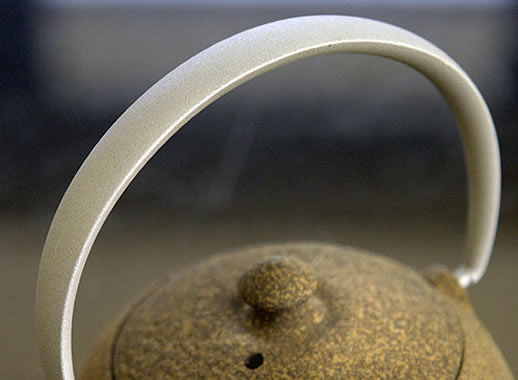
Q: I see. Thank you very much. Today I’ve learned a lot about the importance of valuing tradition and innovation.
A: You take half steps, evolve, and that becomes a natural approach. Half steps, that means if you do it four times, you get two steps ahead. If you don’t have the courage to take a whole step at one time, you try taking a half step. And in a hundred years, two hundred years time, what you’ve done begins to be called “tradition.” I think that what we call tradition really is the result of continual innovation.
Kikuchi Hojudo
12, Imonomachi, Yamagata City, Yamagata
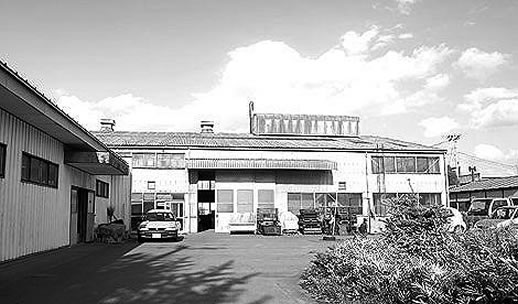
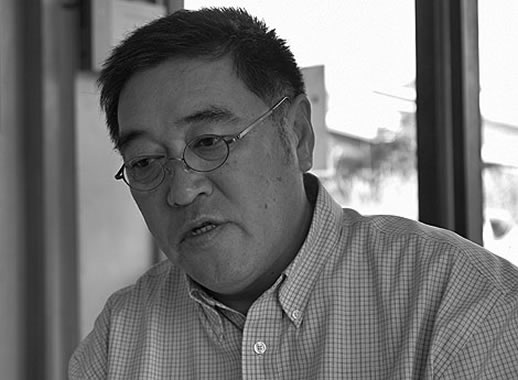
A Word from a Regional Project Participant


Originally, we had established something called the Carrozzeria Project in 2003 which was a collaboration between Ken Okuyama and local Yamagata companies, and from there we got involved in the Japan Brand project. We at the chamber of commerce have always maintained a position of “not getting in the way.” Mr. Okuyama acted as a conceptual leader and took command. We tried to stay in the sidelines, out of the way, giving our support in an unobtrusive way. Through this project, we have had very little of what you could call hardship, and in fact we have learned a lot. It has been really impressive to see the local craftspeople giving their utmost in response to Mr. Okuyama’s demands. Thanks to that, I think the craftspeople at the participating companies have reached a new level in their respective fields. As a result of everyone’s efforts, we participated in the France’s international interiors trade fair, the Maison et Objet (2006 to 2008) and Italy’s Milano Salone Internazionale del Mobile (April 2008). In addition, Yamagata Kobo was founded in February 2007 to give sales support, and the Carrozzeria Foundation was established as a business model in September of 2007. But the best proof of our success has been the eighty-plus product variations that have been produced thanks to the venture, and the numerous hit products that have emerged. We plan to continue using Yamagata’s superior local resources and talented craftspeople, from product development to production and sales; world-class products united under the Yamagata name.
Japan Brand
Japan Brand



